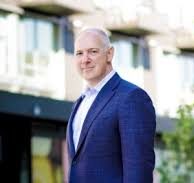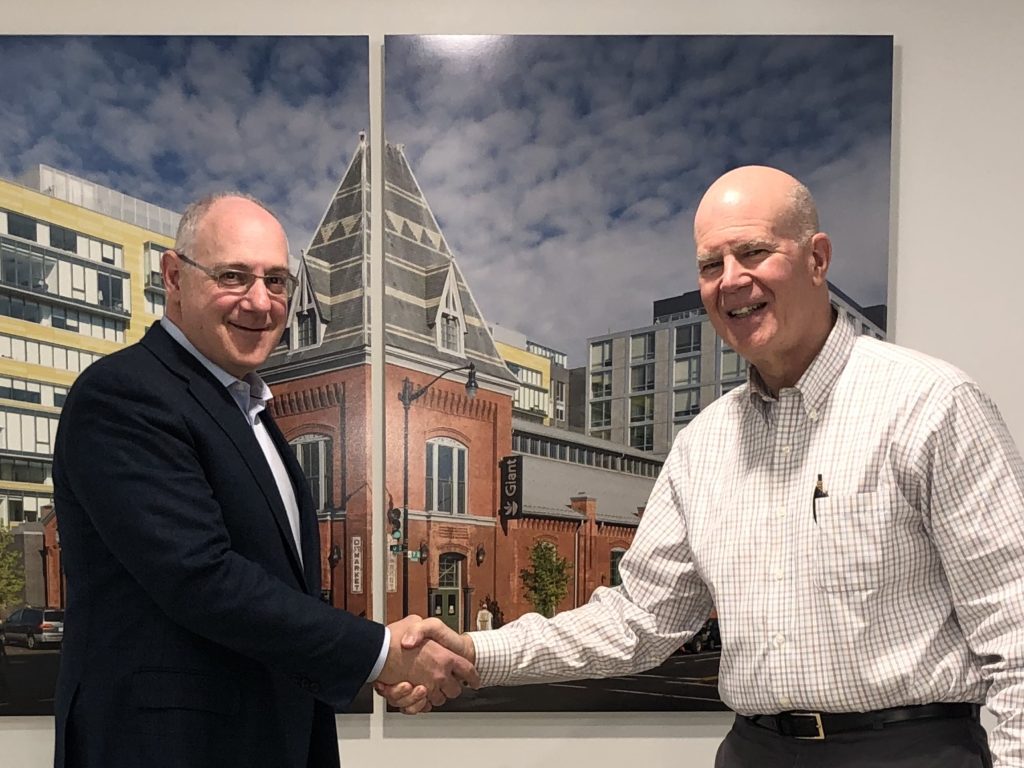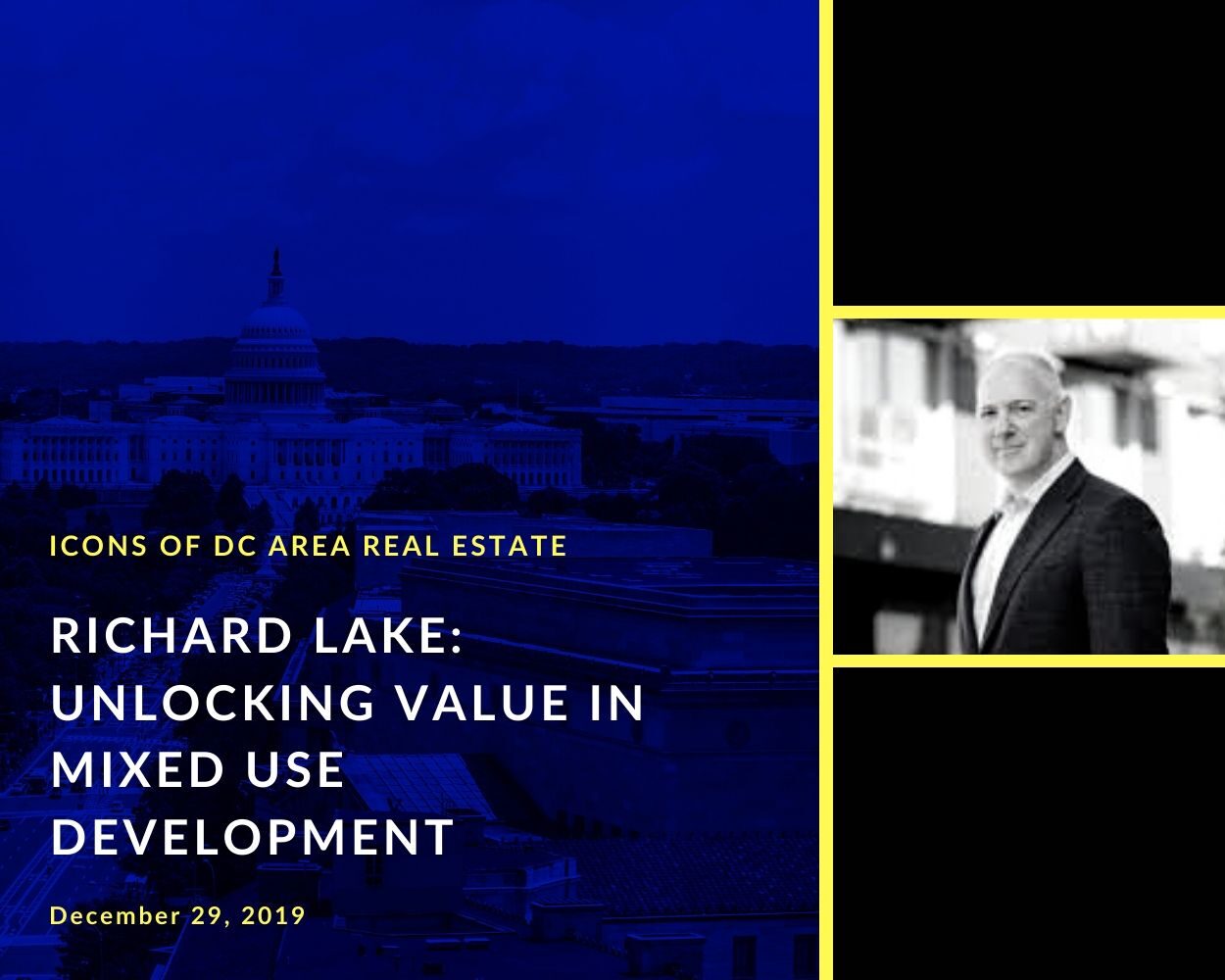
Bio
Richard Lake is the founding Principal of Roadside Development. Roadside was formed 20 years ago as a Washington, DC-based development company, focused on the creation of retail and mixed-use environments. Roadside has become one of the leading experts in urban and town center development throughout the metropolitan Washington, DC region.

Richard Lake
Richard has been responsible for overall acquisition, entitlement, development, leasing, and property management of more than 25 million SF over the past three decades. Notable recent projects include City Ridge located at 3900 Wisconsin Avenue, NW which occupies 550 feet of frontage along Wisconsin Avenue NW, the site includes approximately 9.71 acres of land that is bound by a residential neighborhood to the south, Glover-Archbold Park to the west, and a private office building to the north; City Market at O & 880 P, a million square foot, urban infill project in the heart of the Shaw neighborhood in Washington DC, which spans two city blocks and features nearly 90,000 square feet of retail, 550 luxury rental apartments, 90 affordable senior rental units, a 182-room key hotel, a 500-car parking garage, and incorporates the historic preservation of the nationally registered landmark O Street Market; Stonebridge at Potomac Town Center, a 105-acre mixed-use retail town center and residential community in Woodbridge, Virginia; and Cityline at Tenley, which preserved and transformed an abandoned historic Sears building into an award-winning mixed-use project that attracted Washington, DC’s first Best Buy and Container Store retailers while also incorporating a contemporary addition of 204 luxury condominium units.
His talent for working with development teams and optimizing a project’s full value potential throughout all stages of the real estate cycle is one of his greatest assets. He has also served as a consultant on several real estate projects throughout the country, with an expertise in place-making, by creating successful retail environments and public spaces that amenitize and enhance residential, commercial, and cultural uses to become vibrant mixed-use communities.
He is a native Washingtonian and have been an active member of the business community for over 30 years. Prior to co-founding Roadside Development, Richard was the founding partner of The Retail Group and led Madison Retail Group, a full-service retail brokerage firm that was the dominant leader in the DC and Mid-Atlantic markets. He began his career in real estate as a broker with Smithy Braedon ONCOR International. He is a graduate of Boston University.
Richard currently serves on the board of directors for several non-profit and economic development organizations, including Co-Chair of the Washington DC Economic Partnership, Iona Senior Services (also previously President of the Board), Executive Committee Member for DCBIA, Developers Roundtable of DCBIA, Prince William County Economic Advisory Board and Trustee of Federal City Council, Member of Children’s National Real Estate Committee. He is also a member of ULI and ICSC.

Shownotes
- Roadside was founded as a partnership 20 yrs. ago with Richard, Armond Spikell and Todd Weiss. (3:00)
- Went to Boston University and trained to be a bond salesman, but was intrigued by development from a professor (5:30)
- His Dad, Hal Lake was the proprietor of the Zebra Room, a famous pizza bar/restaurant (6:15)
- Dad’s philosophy was “No job is too dirty” (6:50)
- Dad’s marketing effort was to buy prescription list of People’s Drug Store to send out mailers for specials at the Zebra Room. (8:45)
- Carl Albert Story at the Zebra Room (9:15)
- Retail business- Principals from his Dad:
- 1. Make all people feel good.
- 2. Valued hard work,
- 3. Loved family- “Old World” philosophy (11:00)
- Looked at retail real estate brokerage and wanted to work with smaller firms. Inspired by Jim Eichberg of Smithy Braedon to join them (14:00)
- Partnered with Armond Spikell at Smithy Braedon (15:00)
- Landlord broker primarily and then called on Giant Food and learned about their stores and leases (16:30)
- Atlantic Realty and Toll Brothers were clients (17:30)
- Story about construction education for shopping centers to know details relative to tenant’s needs (18:30)
- Tom Miller, the original developer of Bethesda Row, was an inspiration (19:30)
- Discussed Robert E. Simon (founder of Reston, VA) (20:15)
- Was with Smithy Braedon as a broker for 14 years and started “The Retail Group” within the company (21:45)
- CVS Drug asked “Roadside Development”, which had been created, to develop build to suit CVS Drug pads and end cap stores as a “preferred developer” (23:30)
- When Smithy Braedon was sold to Grubb & Ellis, Roadside and The Retail Group went over to Madison Marquette as a parent to become the “Madison Realty Group” (26:00)
- Confusion arose after the merger with Madison Marquette as to the role of Roadside and Madison Realty Group and Roadside then broke away from Madison Marquette (28:00)
- Roadside wanted to find properties to “unlock” the value for themselves and the sellers. (31:00)
- Evolution of single story retail into mixed use development (32:15)
- Tenleytown property- Unlock value by using existing structure to build retail and multifamily together. (33:00)
- Brings up nightmare of conflict between retail development and multifamily development using Federal and Post Property project at Pentagon Row and what he learned not to do (35:00)
- In discussing approvals for the Tenleytown project, Roadside “approach” is a “retailer” approach so that the customer is most important and the development process should be run with that lens (37:30)
- Addressing concerns of neighbors in Tenleytown (38:00)
- Cited story about “landmark” author recommending more density on the Tenleytown project. (40:45)
- City Market at O St. Story (43:00)
- Creative Public/Private partnership saves the only Giant store in the neighborhood with Roadside’s vision to complete a mixed use project (45:00)
- Market building collapses while Giant was managing the old market site and then a creative strategy to load below grade to serve the store. Roadside decides the entire project should load that way. (49:00)
- Placemaking vertically in the project (52:30)
- Giant Food needed to rethink the redevelopment of the store to get to at least 57,000 s.f. Moved all “back of the house” in the lower level (55:00)
- Financing of project explained including one of the largest HUD loans where the partnership worked very well (57:00)
- Project has “legitimized” the Shaw neighborhood with its varied amenities (59:00)
- Flood during construction in residential buildings that affected tenants to significant disruption and caused some reputation damage which subsequently was overcome- “Fight the fight for the tenants” (1:01:00)
- “Don’t hide behind an insurance company” after damage from flood (1:03:00)
- Hodge Building (affordable housing building on site) is “where we would be proud for our parents to live” (1:04:30)
- Story about Stonebridge at Potomac Town Center (1:06:00)
- 100 acre site for a vertical project, but decided to split off residential into a separate site and sold it to another residential developer. (1:07:00)
- Project came on stream in 2009 during financial crisis and most tenants fell away except Wegman’s. Richard calls it the “high school” affect! (1:08:00)
- Wegman’s stepped up and opened up freestanding on the project to address the market despite the recession (1:09:00)
- Went to Wegman’s headquarters in Rochester, NY to address “urban” stores to compress to 82,000 s.f. from typical 138,000 s.f. format
- Wegman’s story is an experience and very customer focused. They are among the top five places to work for any employer. Danny Wegman told Richard that he wants his customers to eat “healthy” (1:13:00)
- Richard says he wants to have the same philosophy of a “personal touch” as Wegman’s within his projects (1:15:00)
- Discusses the automation factor in grocery stores (1:18:30)
- City Ridge story- Derived from losing the bid on the Walter Reed redevelopment project. Richard was disappointed and then started looking around for another project.
- Richard met Fannie Mae at a project in SW DC years earlier and had a relationship prior to the RFP for the HQ project (1:22:00)
- Met with Mayor and Congresswoman of DC to discuss redevelopment of the Fannie Mae HQ site. He proposed a mixed use project as opposed to only residential development. (1:25:00)
- Lowered elevation of the project with a full structural modification to accommodate Wegman’s construction due to “historic preservation” requirements (1:28:00)
- Brought in North American Sekesui House (NASH) as their JV partner (1:30:00)
- Took 440,000 cubic yards of dirt from site to bring five acres of land down to make a village concept on the site (1:32:00)
- Create a 24 hr. experience (1:35:00)
- Transportation to site (1:36:00)
- First Wegman’s store in DC (1:38:00)
- Parking description (1:40:00)
- Roadside philosophy- “Wants people that think beyond themselves” (1:42:00)
- About the people and culture- team approach
- Original partners want to leave a legacy of good culture
- Seeks people with “passion” today
- Advice to new employees- “Bring something unique to the table”
- Cites comparison of ancient Israel about how people live
- “We need to adapt to the marketplace”
- Wishes he could have started earlier in development in taking risks and had confidence to “go for it”
- “Think beyond yourself”

